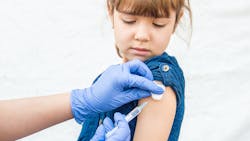CDC releases report on unknown hepatitis in children
Following identification of pediatric hepatitis cases of unknown etiology in the United States and the United Kingdom, CDC issued a request in April 2022 for U.S. providers to report additional cases.
Many reported cases had test results positive for adenovirus, which is not known to cause hepatitis in immunocompetent children.
What is added by this report?
Analyses of four data sources did not indicate recent increases in hepatitis-associated emergency department visits or hospitalizations, liver transplants, or adenovirus types 40/41 percent positivity among U.S. children compared with pre–COVID-19 pandemic levels.
What are the implications for public health practice?
Current data do not suggest an increase in pediatric hepatitis or adenovirus types 40/41 above pre–COVID-19 pandemic baseline levels; continued surveillance is important to monitor changes over time.
In November 2021, CDC was notified of a cluster of previously healthy children with hepatitis of unknown etiology evaluated at a single U.S. hospital. On April 21, 2022, following an investigation of this cluster and reports of similar cases in Europe, a health advisory was issued requesting U.S. providers to report pediatric cases of hepatitis of unknown etiology to public health authorities. In the United States and Europe, many of these patients have also received positive adenovirus test results. Typed specimens have indicated adenovirus type 41, which typically causes gastroenteritis. Although adenovirus hepatitis has been reported in immunocompromised persons, adenovirus is not a recognized cause of hepatitis in healthy children.
Because neither acute hepatitis of unknown etiology nor adenovirus type 41 is reportable in the United States, it is unclear whether either has recently increased above historical levels. Data from four sources were analyzed to assess trends in hepatitis-associated emergency department (ED) visits and hospitalizations, liver transplants, and adenovirus stool testing results among children in the United States. Because of potential changes in health care–seeking behavior during 2020–2021, data from October 2021–March 2022 were compared with a pre–COVID-19 pandemic baseline. These data do not suggest an increase in pediatric hepatitis or adenovirus types 40/41 above baseline levels. Pediatric hepatitis is rare, and the relatively low weekly and monthly counts of associated outcomes limit the ability to interpret small changes in incidence. Ongoing assessment of trends, in addition to enhanced epidemiologic investigations, will help contextualize reported cases of acute hepatitis of unknown etiology in U.S. children.
